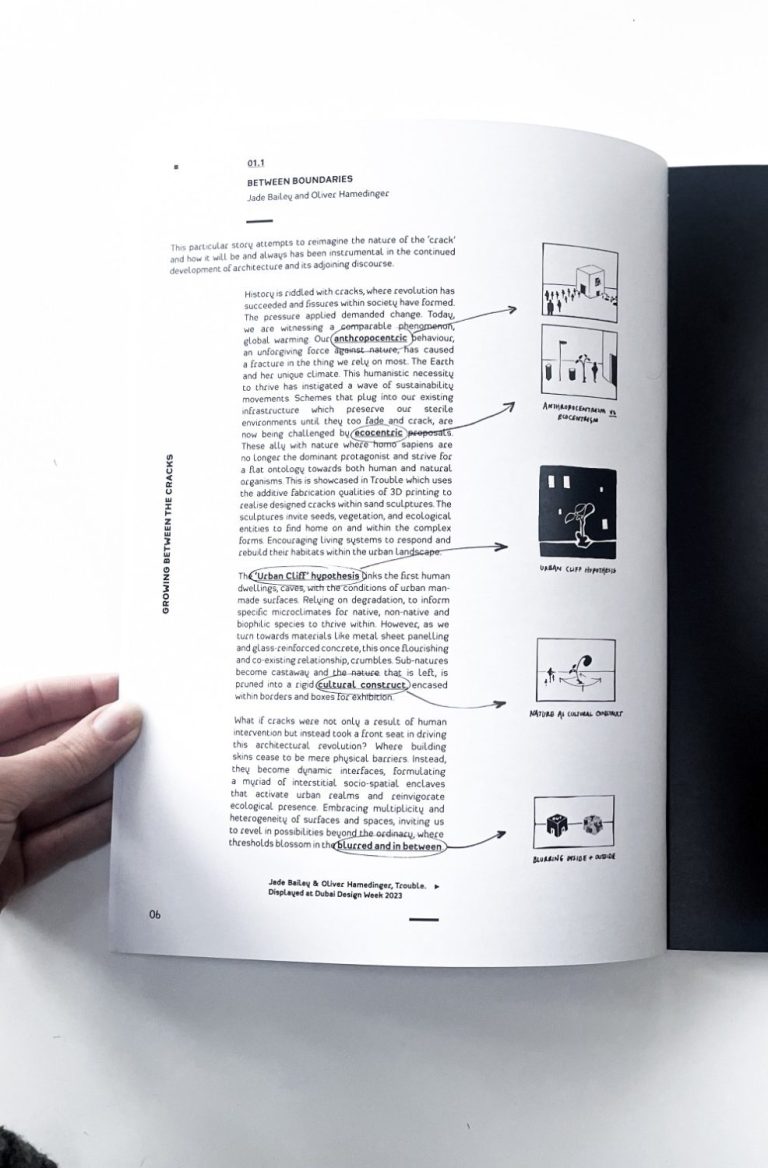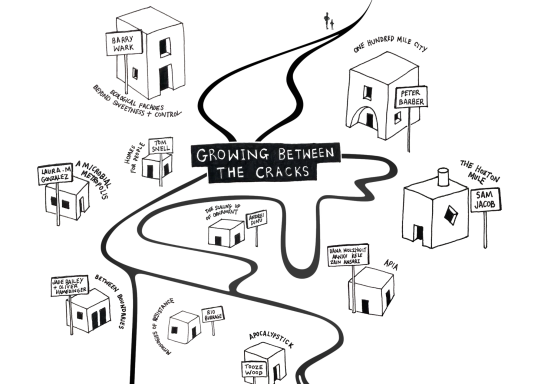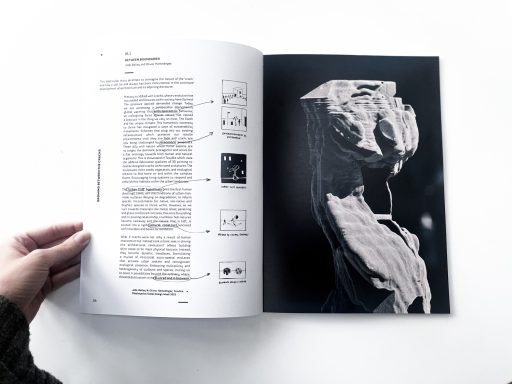Feb
2024
Between Boundaries, Article for The Point. Issue 01 - Growing between the cracks
This particular story attempts to reimagine the nature of the ‘crack’ and how it will be and always has been instrumental in the continued development of architecture and its adjoining discourse.
History is riddled with cracks, where revolution has succeeded and fissures within society have formed. The pressure applied demanded change. Today, we are witnessing a comparable phenomenon, global warming. Our anthropocentric behaviour, an unforgiving force against nature, has caused a fracture in the thing we rely on most. The Earth and her unique climate. This humanistic necessity to thrive has instigated a wave of sustainability movements. Schemes that plug into our existing infrastructure which preserve our sterile environments until they too fade and crack, are now being challenged by ecocentric proposals. These ally with nature where homo sapiens are no longer the dominant protagonist and strive for a flat ontology towards both human and natural organisms. Showcased in Trouble which uses the additive fabrication qualities of 3D printing to realise designed cracks within sand sculptures. The sculptures invite seeds, vegetation, and ecological entities to find home on and within the complex forms. Encouraging living systems to respond and rebuild their habitats within the urban landscape.
The ‘Urban Cliff’ hypothesis links the first human dwellings, caves, with the conditions of urban man-made surfaces. Relying on degradation, to inform specific microclimates for native, non-native and biophilic species to thrive within. However, as we turn towards materials like metal sheet panelling and glass-reinforced concrete, this once flourishing and co-existing relationship, crumbles. Sub-natures become castaway and the nature that is left, is pruned into a rigid cultural construct, encased within borders and boxes for exhibition.
What if cracks were not only a result of human intervention but instead took a front seat in driving this architectural revolution? Where building skins cease to be mere physical barriers. Instead, they become dynamic interfaces, formulating a myriad of interstitial socio-spatial enclaves that activate urban realms and reinvigorate ecological presence. Embracing multiplicity and heterogeneity of surfaces and spaces, inviting us to revel in possibilities beyond the ordinary, where thresholds blossom in the blurred and in between.
Article written by Jade Bailey & Oliver Hamedinger

The personal article is about how design can evolve to encompass a relationship to natural ecology more than ever before.
Details
The personal article is about how design can evolve to encompass a relationship to natural ecology more than ever before.
Words: 320
Key Words
design, communicate, manifesto, research, thoughts, space, materiality, fabrication, technology, ecology, composite, architecture, sand, research, coexisting, climate change.
Collaborations
Sketches by John Clayson
Publications
Published in The Point. Vol 1, Feb 24
Link to digital Publication: https://www.kr3n.com/jadeoliver-1
© JOYH 2024. All rights Reserved
Wir benötigen Ihre Zustimmung zum Laden der Übersetzungen
Wir nutzen einen Drittanbieter-Service, um den Inhalt der Website zu übersetzen, der möglicherweise Daten über Ihre Aktivitäten sammelt. Bitte überprüfen Sie die Details in der Datenschutzerklärung und akzeptieren Sie den Dienst, um die Übersetzungen zu sehen.




